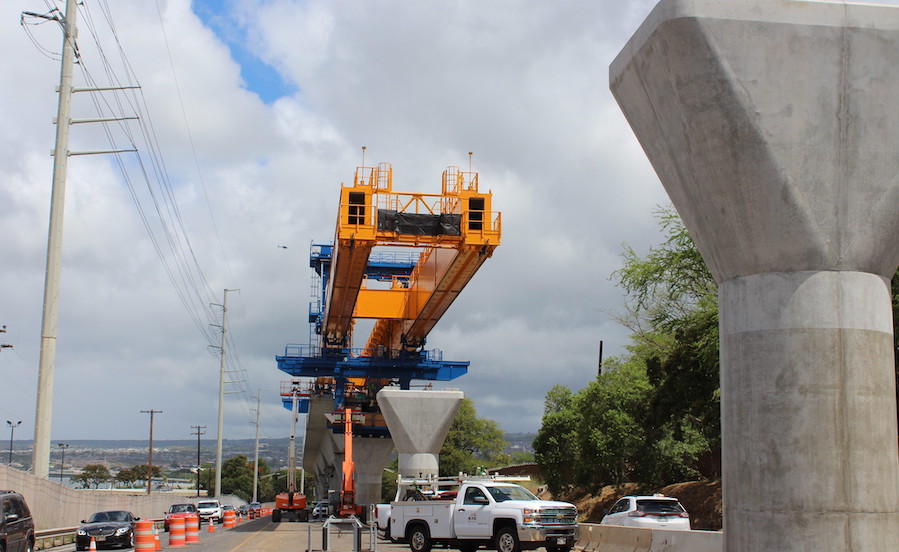Pandemic Delays P3 Proposal Deadline for Honolulu Light-Rail Section

A section of the Honolulu Rail Transit Project under construction. Photo: Courtesy of the Honolulu authority for Rapid Transportation
Officials of the agency building the controversial, 20-mile-long light-rail project in Honolulu had planned to receive the final proposals for the unusual P3 April 22.
The Honolulu Authority for Rapid Transit had sought proposals for the final segment of the embattled project. But the would-be bidders said the COVID-19 pandemic introduced new obstacles to the planning, so HART postponed the final deadline until July.
[For ENR’s latest coverage of the impacts of the COVID-19 pandemic, click here]
Andrew Robbins, CEO of HART, which is building the project along with the City & County of Honolulu, told local media outlets that the delay stemmed partly from the difficulty the competing teams had communicating with vendors during the pandemic emergency.
The entire project’s final price is now projected to fall between $8 billion and $9 billion, and HART decided to solicit a P3 for the project’s final section in 2018 after years of controversy over delays and ballooning costs.
The request for proposals invited companies to make technical and price proposals to design, build, finance, operate and maintain 4.1 miles of elevated concrete guideways and track, eight stations, a transit center and a 1,600-space parking facility. At the request of the teams, HART and the City & County of Honolulu extended the final proposal deadline and the final award date. That date now “is tentatively planned for August,” according to a HART spokesman.
Hitachi Rail Honolulu, a joint venture, will operate and maintain the overall elevated rail system.
Most, but not all, of the prime construction contracts to date have been design-build contracts awarded based on best value. Under state law, the identities of the prequalified short list of P3 offerors cannot be disclosed prior to the receipt of the final technical and price proposals.
While the use of a P3 for the final segment has been portrayed as a type of procurement Hail Mary pass, the HART spokesman says that one reason the approach was chosen was that it was seen as the best way to allocate risk between the public and private sectors.
A falloff in ridership throughout the entire HART system had also recently created another potential financial problem for the project.
As recently as October, a risk evaluation looked promising after examining 183 potential costs that could drive up the final project price tag. Among the top risks evaluated were right-of-way acquisition, utility and underground conditions and management capability and staffing needed for right-of-way acquisition or supervision of the work. As of October 2019, the risk evaluation determined the project had a better than even chance of being completed at a cost of $8.14 billion. But that was partly based on the P3 procurement and work being completed on or ahead of schedule.
